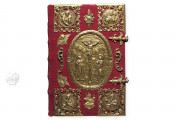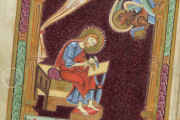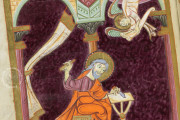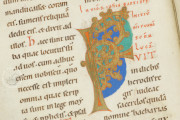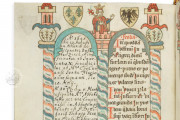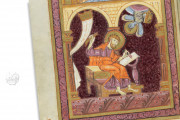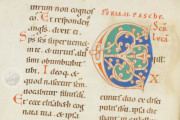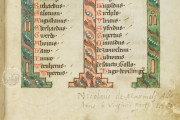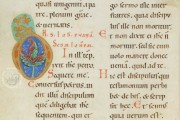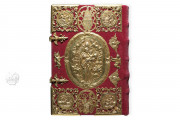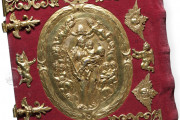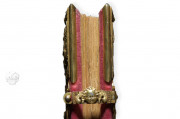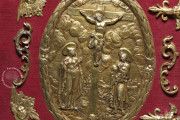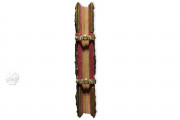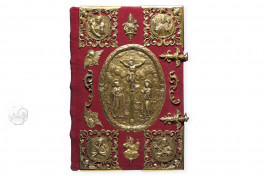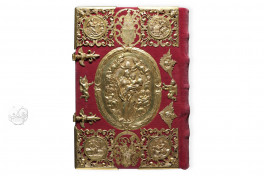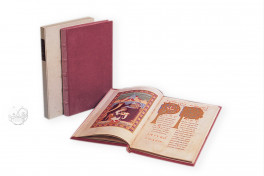The Golden Book owes its name to the lavish gold decoration of its initials and miniatures as well as to the gilded ornaments of the Renaissance binding. The manuscript is a composite object as it contains sections belonging to both the Ottonian and the Gothic period. Thus, besides its antiquity, it is an important artistic statement as it provides evidence of the ways in which the precious book was repeatedly embellished throughout the centuries.
An Ottonian Liturgical Manuscript in the Style of the Reichenau Scriptorium
This manuscript is mainly an Evangeliary, which contains the Gospel readings for the major feasts of the liturgical year. The Gospel sequences are grouped by author, and each group is introduced by a portrait of the respective Evangelist.
The abundance of gold and the imperial purple as a ground for the illuminations are characteristics of the Ottonian style. The luxurious manuscript, also by means of its precious materials, evokes the glory of God. The style of the illuminations is clearly inspired by the Reichenau Scriptorium. The full-page miniatures of the Evangelists are set against precious marbled crimson. Gold initials with interlaced design mark the main sections in a typical Ottonian fashion.
An Ottonian Book at the Benedictine Abbey of Pfäfers
Additional items to the Ottonian lectionary make this manuscript a remarkable document of medieval culture. The manuscript was kept in the Abbey of Pfäfers at least in the fifteenth century. At the beginning of the fifteenth century, the Benedictine monks added to the manuscript a list of abbots from Pfäfers, along with records of the rights and possessions of the Abbey.
Written in German and Latin, the additional section about the possessions of the abbey was decorated with a feather design typical of the International Gothic style. The unusual composition of the manuscript as a whole, in which the liturgy of the Ottonian period is enriched with information about the monks at Pfäfers, characterizes the manuscript as a relevant document of the spiritual and material life of medieval monasteries.
The codex features gilded chased relief decoration applied on a red velvet binding. The binding probably dates to the late fifteenth century.
We have 2 facsimiles of the manuscript "Golden Book of Pfäfers":
- Das Goldene Buch von Pfäfers (Deluxe Edition) facsimile edition published by Akademische Druck- u. Verlagsanstalt (ADEVA), 1993
- Das Goldene Buch von Pfäfers (Standard Edition) facsimile edition published by Akademische Druck- u. Verlagsanstalt (ADEVA), 1993


